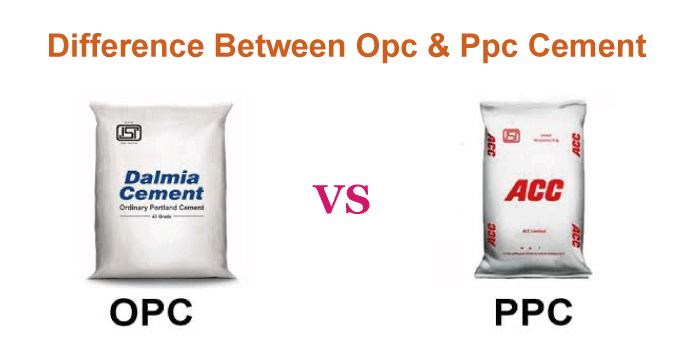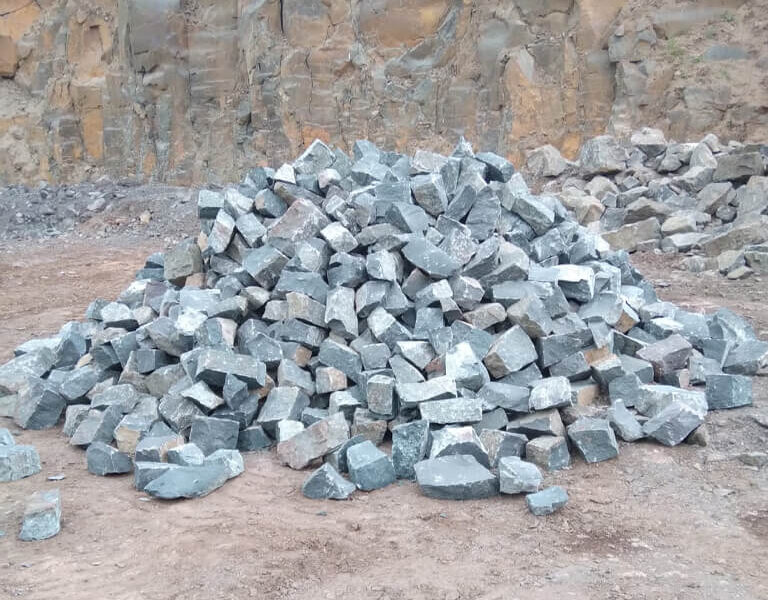OPC (Ordinary Portland Cement) and PPC (Portland Pozzolana Cement) differ mainly in their composition and properties. OPC is primarily made from limestone and other raw materials like clay and gypsum. While PPC includes OPC clinker mixed with pozzolanic materials such as fly ash, silica fumes, or volcanic ash.
OPC typically has higher initial strength but may lack long-term durability compared to PPC, which gains strength over time. PPC generates less heat during hydration, making it suitable for large pours, while OPC sets faster.
Additionally, PPC is generally more environmentally friendly and cost-effective due to its use of recycled materials. Overall, the choice between OPC and PPC depends on project requirements and specific application needs.
What Is OPC?
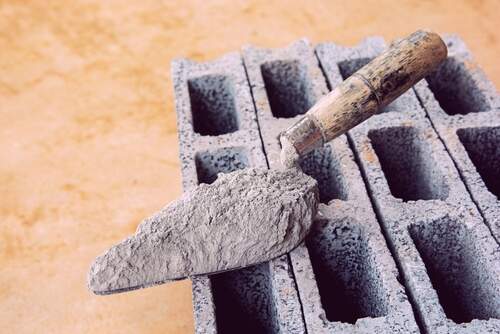
OPC stands for Ordinary Portland Cement. It is the most widely used type of cement in the construction industry. OPC is manufactured through the grinding of clinker, gypsum, and other additives such as limestone, fly ash, or slag, depending on the desired properties.
Further, Known for its strength, durability, and versatility, steel finds various construction applications in residential, commercial, and infrastructure projects. It is commonly used in the production of concrete, mortar, and grout. It undergoes a chemical reaction with water to form a hard and strong binder that binds aggregates together to create concrete structures.
OPC is available in different grades, such as OPC 33, OPC 43, and OPC 53, which denote the compressive strength of the cement after 28 days of curing.
What Is PPC?
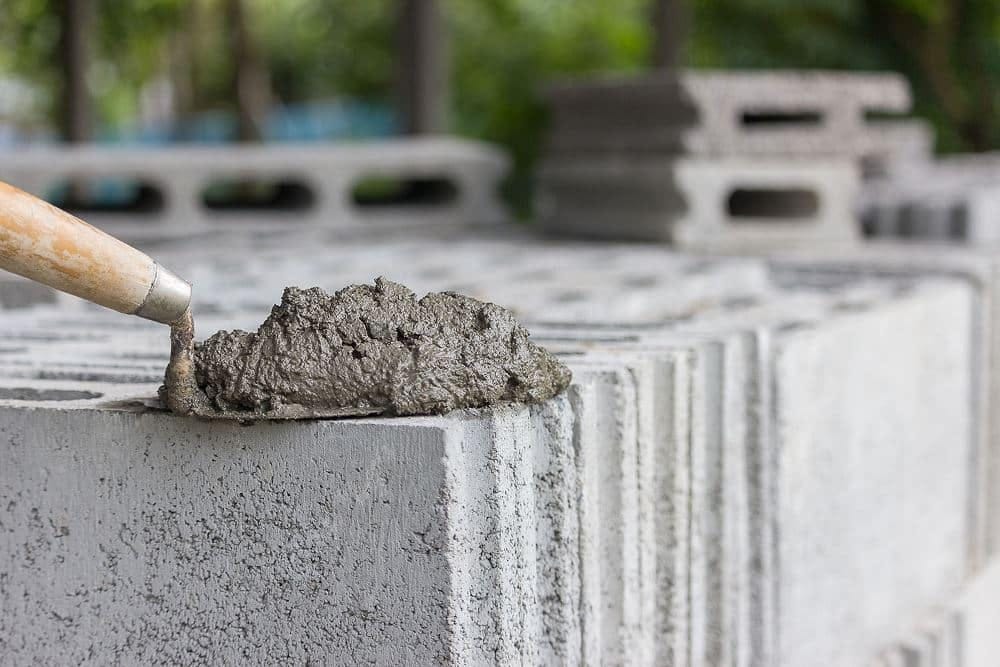
PPC stands for Portland Pozzolana Cement.It is a type of cement that consists of pozzolanic materials such as fly ash, which is a by-product of coal-fired power plants. Along with clinker, gypsum, and other materials.
Pozzolanic materials are added to cement to improve its properties, such as workability, durability, and resistance to various environmental factors. PPC cement is widely used in construction due to its numerous advantages. These include enhanced durability, reduced heat of hydration, and environmental benefits due to the utilization of industrial waste materials.
What Is the Use of PPC &OPC?
PPC (Portland Pozzolana Cement) and OPC (Ordinary Portland Cement) serve distinct purposes in construction. OPC is commonly employed in general construction projects where high strength and quick setting are essential, such as in high-rise buildings and road infrastructure. Its rapid setting properties make it ideal for projects requiring expedited construction.
On the other hand, PPC finds its niche in specialized applications where durability and sustainability are paramount. This includes in mass concrete works, underwater structures, and projects aiming for environmental certifications.
The addition of pozzolanic materials like fly ash enhances PPC’s long-term durability and resistance to aggressive environments. This makes it suitable for structures exposed to harsh conditions.
While OPC is favored for its strength, PPC offers advantages in terms of sustainability and improved workability, catering to specific construction needs and preferences.
Ultimately, the choice between PPC and OPC depends on factors such as project requirements, environmental considerations, and construction conditions.
Differences Between OPC and PPC Cement
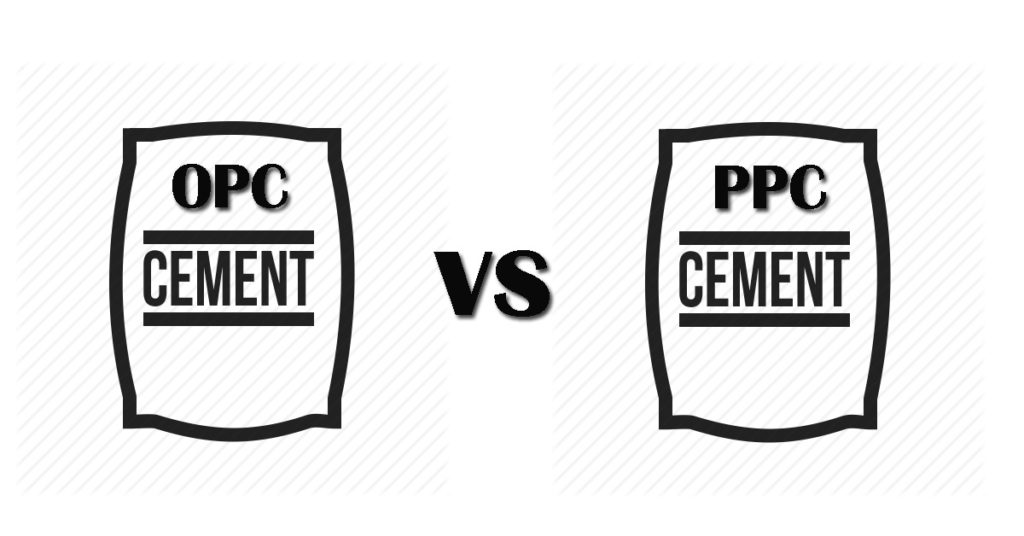
The following table lists the primary distinctions between OPC and PPC cement
| Aspect | Ordinary Portland Cement (OPC) | Portland Pozzolana Cement (PPC) |
| Definition/Components | Made by mixing and grinding limestone, other raw materials, and gypsum. | Created by adding Pozzolanic materials like clay, ash, or silica to OPC. |
| Strength | Initially strong, but long-term strength is lower due to lack of additives. | Initially weaker, but gains strength over time thanks to added materials. |
| Heat of Hydration | Generates more heat during setting, not ideal for large pours. | Sets slowly and generates less heat, suitable for larger concrete projects. |
| Durability | Less resilient in harsh conditions, more susceptible to damage. | More durable, better withstands tough weather and chemical exposure. |
| Cost | Generally more expensive due to processing requirements. | Typically cheaper, as it uses recycled materials, reducing production costs. |
| Environmental Impact | Contributes to CO2 emissions, less eco-friendly. | More eco-friendly, utilizes waste materials, reducing environmental impact. |
| Application/Uses | Suitable for quick projects, but not recommended for large-scale pours. | Versatile, suitable for various construction projects, including large ones. |
| Setting Time | Sets faster, allowing for quicker construction work. | Sets slower, providing more time for precise finishing. |
| Fineness | Less finely ground, may affect durability. | Finer texture improves strength and durability. |
| Grades Available | Offered in different grades indicating strength levels.Grades 33, 43, 53 | No specific grades, but generally meet standard construction requirements. |
| Workability | Less malleable, and may require more effort to work with. | Easier to handle, better flow, and workability. |
| Resistance to Chemicals | More susceptible to chemical damage. | More resistant to chemical corrosion and damage. |
What Are The Advantages & Disadvantages of OPC Cement?
The Advantages & Disadvantages of OPC (Ordinary Portland Cement)
Advantages of OPC Cement
- OPC cement boasts a high compressive strength, rendering it ideal for demanding applications like bridge construction and other infrastructure projects.
- Structures constructed with OPC cement exhibit resilience and resistance to chemical attack, contributing to their longevity.
- Its adaptability allows for its use across a wide range of construction applications, including concrete manufacture, mortar, plaster, and grout, providing flexibility to construction projects.
- It is readily available on the market, ensuring easy procurement for construction projects, thereby streamlining the construction process.
Disadvantages of OPC Cement
- The manufacturing process of OPC cement requires a substantial amount of energy, contributing to its high carbon footprint.
- The production of OPC cement results in significant emissions of greenhouse gases, exacerbating climate change concerns.
- It tends to be relatively expensive compared to alternative cement varieties, potentially increasing the overall cost of construction projects.
- OPC cement’s longer curing time may lead to delays in construction projects and subsequent rise in expenses.
What Are The Advantages & Disadvantages of PPC Cement?
The advantages & Disadvantages of PPC (Portland Pozzolana Cement) include:
Advantages of PPC Cement
- It exhibits high resistance to corrosion and cracking, making it well-suited for structures enduring challenging weather conditions.
- The pozzolanic materials in PPC cement facilitate easier mixing and application compared to other cement types, enhancing construction efficiency.
- It generates less heat during hydration, mitigating the risk of cracking in large structures.
- PPC cement utilizes waste resources like fly ash, rendering it more environmentally friendly than other cement varieties.
- It is often more affordable than alternative types of cement, providing a cost-effective option for construction projects.
Disadvantages of PPC Cement
- It typically has a longer setting time than other cement types, potentially causing delays in construction work.
- PPC cement may have lower initial strength compared to other types, necessitating additional curing time.
- The quality of it can vary depending on the source and quality of pozzolanic materials used, affecting its overall performance.
- It may not be readily available in all areas, restricting its use in some construction projects.
- It may not be suitable for all construction applications, requiring careful evaluation based on the specific needs of the project.
FAQ’s
Which cement is better OPC or PPC?
While OPC provides good strength, its durability might be slightly lower in certain conditions. Pozzolanic materials in PPC contribute to better durability, increasing resistance to aggressive chemicals and improving long-term strength.
What is the difference between OPC and PPC?
PPC cement has a longer setting time compared to OPC cement. The slower setting time allows for better finishing and workability, making it suitable for projects where extended handling time is required. OPC cement typically has a fineness of 225 sq. m/kg, which is lower compared to PPC cement.
Where is PPC cement used?
Portland Pozzolana Cement (PPC) can be confidently employed in construction of hydraulic structures, marine works, mass concreting such as dams, dykes, retaining walls foundations, and sewage pipes. It is also suitable for use in common applications such as masonry mortars and plastering.
Final Words
When choosing between OPC and PPC cement, consider the project’s needs. OPC offers higher initial strength and faster setting times, suitable for quick construction.
On the other hand, PPC gains strength over time, is ideal for long-lasting structures, and is environmentally friendly due to recycled materials. While OPC may be costlier, PPC proves cost-effective in the long run.
Ultimately, the decision depends on factors like durability, setting time, and environmental impact. Choose wisely to ensure the best outcome for your construction project.

